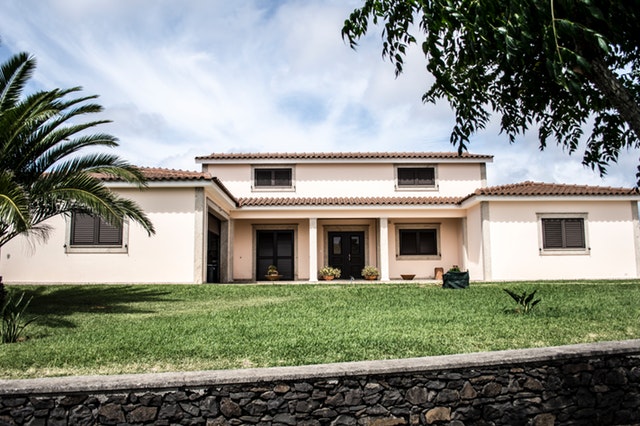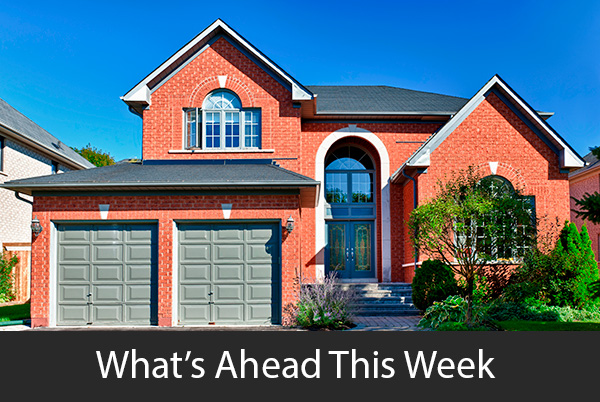 Last week’s scheduled economic news included readings on sales of new and previously-owned homes and consumer confidence. Weekly readings on mortgage rates and new jobless claims were also released.
Last week’s scheduled economic news included readings on sales of new and previously-owned homes and consumer confidence. Weekly readings on mortgage rates and new jobless claims were also released.
COVID-19 Requirements Impact Home Sales
Widespread state and local requirements for sheltering at home negatively impacted home sales in March. New homes sold at an annual pace of 627,000 sales as compared to 741,000 sales reported in February. Analysts estimated 628,000 sales for March according to the Commerce Department.
The National Association of Realtors® reported lower sales of previously-owned homes in March with an annual pace of 5.27 million sales. February’s annual sales rate was 5.76 million homes. Sales of pre-owned homes exceeded analysts’expectations of 5.24 million existing homes sold annually.
Annual sales calculated for March were 8.50 percent lower than February’s reading. Lawrence Yun, the chief economist of the National Association of Realtors®, said that the organization expected home sales to fall in March and expected fewer home sales in April.
The COVID-19 outbreak impacted both home sellers and buyers as restrictions on open houses and home tours limited sellers’ability to show their homes; prospective buyers delayed their home shopping activities due to COVID-19 restrictions and job losses related to business closures.
Mortgage Rates Mixed, Jobless Claims Lower
Freddie Mac reported higher fixed mortgage rates last week; rates for 5/1 adjustable rate mortgages dropped. The average rate for 30-year fixed-rate mortgages rose two basis points to 3.33 percent; rates for 15-year fixed-rate mortgages rose six basis points and averaged 2.86 percent. Rates for 5/1 adjustable rate mortgages fell by six basis points on average to 3.28 percent. Discount points averaged 0.70 percent for fixed-rate mortgages and 0.30 percent for 5/1 adjustable rate mortgages.
First-time jobless claims remained far above average last week but were lower than the prior week. 4.43 million initial unemployment claims were filed last week as compared to 5.24 million claims filed the prior week. Analysts expected a reading of four million new claims filed last week.
April’s Consumer Sentiment Index reading fell to an index reading of 71.8 from the March reading of 89.1 Analysts expected a reading of 69.3. The University of Michigan said that the Index reading from March to April showed the steepest drop in Index history. Analysts said that April’s reading indicated an economic recession.
What’s Ahead
This week’s scheduled economic reports include Case-Shiller Home Price Indices, pending home sales, and the post-meeting statement of the Fed’s Federal Open Market Committee. Fed Chair Jerome Powell will give a press conference after the FOMC statement. Construction spending data will be released along with weekly readings for mortgage rates and new jobless claims.
 There are lots of people out there who are searching for options for mortgage relief. A quick search will reveal options for programs such as FMERR and HARP; however, many of the articles regarding these programs are a bit outdated. This makes them misleading. Sometimes, people might think they can apply for these programs when, in reality, they cannot. These programs have expired. Fortunately, there is another option for HIRO.
There are lots of people out there who are searching for options for mortgage relief. A quick search will reveal options for programs such as FMERR and HARP; however, many of the articles regarding these programs are a bit outdated. This makes them misleading. Sometimes, people might think they can apply for these programs when, in reality, they cannot. These programs have expired. Fortunately, there is another option for HIRO. There are a lot of people who enjoy working from home; however, with the COVID-19 pandemic, many people who are not used to working from home are forced into this new arrangement. It can be hard for individuals o stay focused when they are stuck in the environment at home. Particularly if the kids are home from school, it is easy to get distracted. Fortunately, there are a few ways people can retain their sanity as they work from home.
There are a lot of people who enjoy working from home; however, with the COVID-19 pandemic, many people who are not used to working from home are forced into this new arrangement. It can be hard for individuals o stay focused when they are stuck in the environment at home. Particularly if the kids are home from school, it is easy to get distracted. Fortunately, there are a few ways people can retain their sanity as they work from home. Individuals who own their homes with a considerable amount of equity should consider looking into proprietary jumbo reverse mortgages. These can be helpful tools that may allow seniors to either pay down an existing mortgage or fund their retirement.
Individuals who own their homes with a considerable amount of equity should consider looking into proprietary jumbo reverse mortgages. These can be helpful tools that may allow seniors to either pay down an existing mortgage or fund their retirement.  The “Golden Girls” trend got its name from the popular television sitcom about four elderly women who live together to share expenses. It is becoming a popular way in real life for elderly adults to share homeownership and it has many benefits.
The “Golden Girls” trend got its name from the popular television sitcom about four elderly women who live together to share expenses. It is becoming a popular way in real life for elderly adults to share homeownership and it has many benefits. Last week’s scheduled economic reporting included readings on home builder sentiment, housing starts and building permits issued. Weekly reports on mortgage rates and initial jobless claims were also released
Last week’s scheduled economic reporting included readings on home builder sentiment, housing starts and building permits issued. Weekly reports on mortgage rates and initial jobless claims were also released Millennials are the first generation in America that will probably not be able to do as well as their parents. In the United States, there is not as much upward mobility as there was in the past. What is the cause of this?
Millennials are the first generation in America that will probably not be able to do as well as their parents. In the United States, there is not as much upward mobility as there was in the past. What is the cause of this? Some clever millennials are teaching the older boomers a new way to invest in real estate, which goes by the name of “house hacking.”
Some clever millennials are teaching the older boomers a new way to invest in real estate, which goes by the name of “house hacking.” If you have paid attention to the news recently, you have probably heard about the coronavirus pandemic which also goes by the name COVID-19. Those who are exposed to the virus might be asked to place themselves in quarantine. Some states have even told their residents to shelter in place. While this infection has forced everyone to change the way they live their lives, there are still some home improvement projects you can tackle during quarantine to put your free time to use.
If you have paid attention to the news recently, you have probably heard about the coronavirus pandemic which also goes by the name COVID-19. Those who are exposed to the virus might be asked to place themselves in quarantine. Some states have even told their residents to shelter in place. While this infection has forced everyone to change the way they live their lives, there are still some home improvement projects you can tackle during quarantine to put your free time to use.